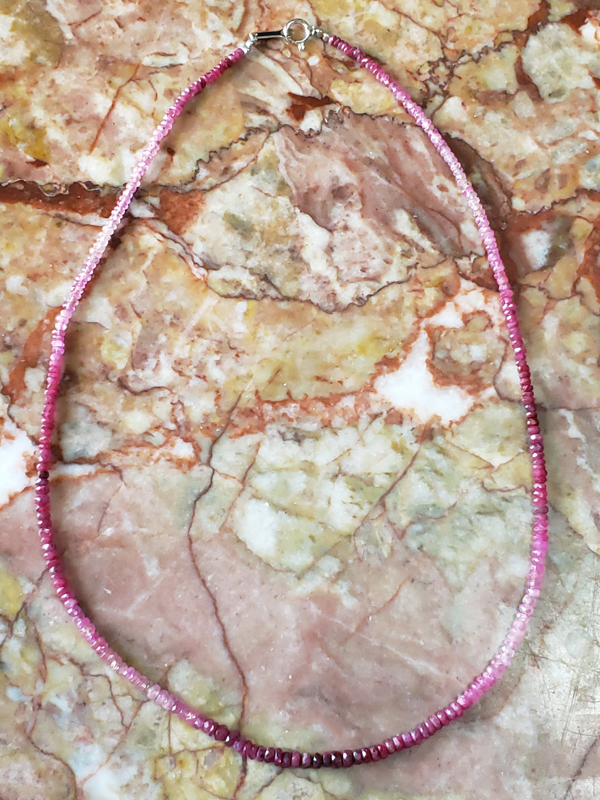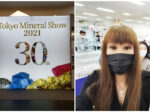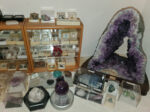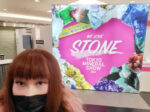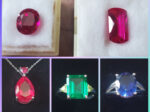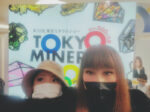 Last updated: April 29, 2023 at 9:48 AM
Last updated: April 29, 2023 at 9:48 AM
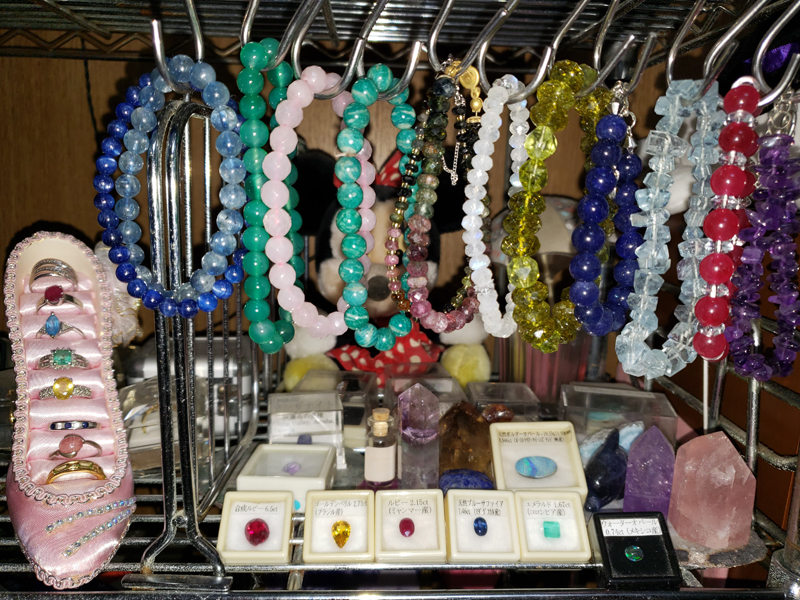
Since about 16 years ago (2004), I have been collecting various jewels (loose), precious stones, minerals, etc. as a hobby, and the web site that summarizes some of them is the link below.
💎 Secret Jewelry Collection
💎 Jewelry (Category Archive of this site)
💎 Mineral Show (tag archive of this site)
💎 Birthstone (tag archive of this site)
As for the site of the "secret jewelry collection", because it is a site made exclusively for PC as a hobby in the era before the smartphone debuted, I think that browsing on the smartphone is severe.
In the future, I would like to remake it into a responsive site that supports smartphones, such as WordPress.
As you can see, although there are gems that have not yet been collected, such as Leir Stone, in addition to collecting most of the stones, the income situation is different from the days when I run a computer company, so I have had fewer opportunities to buy new gems recently.
Although it is such a situation, only bracelets and pendant tops seem to have not cooled down yet, and after that, we have purchased little by little and have reached the present day.
Here, we will introduce those jewels and precious stone bracelets, pendant tops, rings, necklaces, etc. in alphabetical order.
I hope that you will see beautiful jewels and heal your eyes even a little.
Bracelet
We mainly collected natural stone bracelets, but we couldn't buy expensive jewelry such as pink tourmaline, emeralds and tanzanite, so we substituted some of our products with synthetic stones.
Natural Amazonite Bracelet
Amazonite is mainly grown in Brazil and Peru. The Japanese name of amazonite is called Tianhe stone, and mineralogically it is one of the stones called microcrine (microclin) and is a stone with a beautiful color of sky color or blue-green.
The origin of the name is due to a similar stone of color collected in the Amazon River basin.
Amazonite is mainly grown in Peru, Brazil, Russia and South Africa.
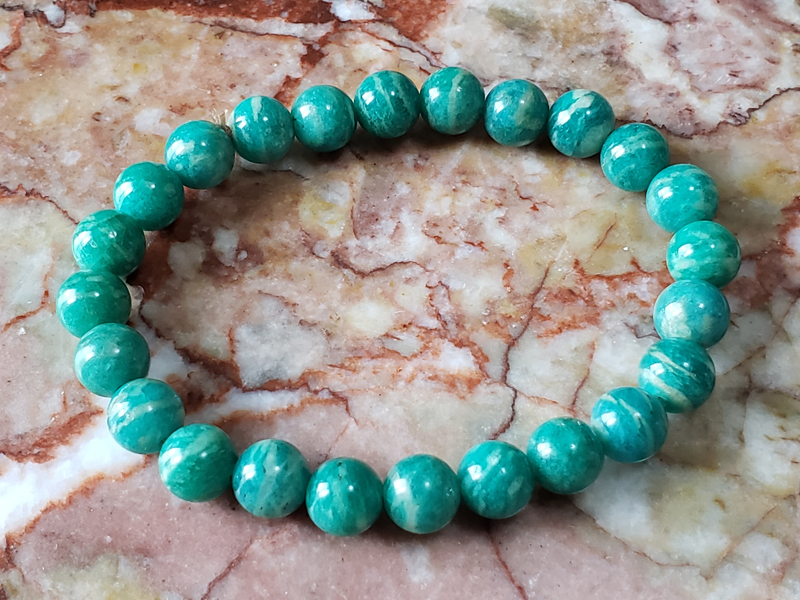
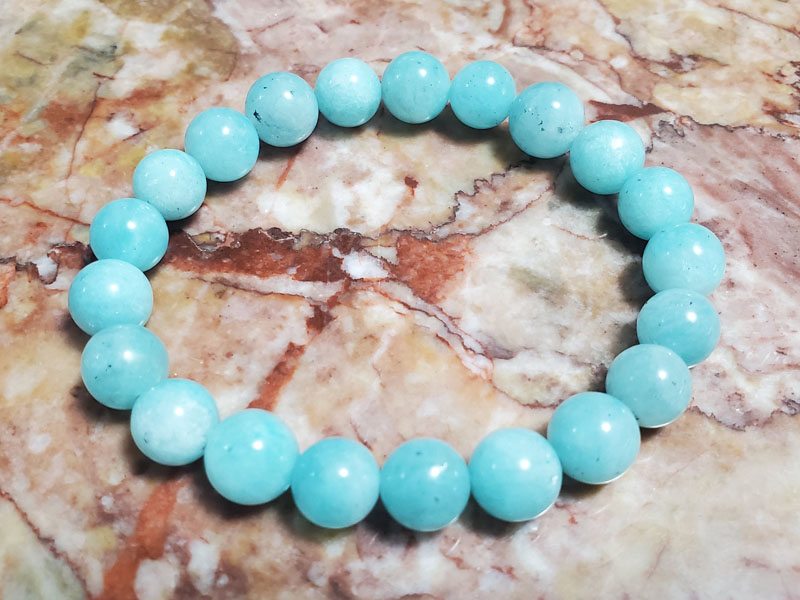
Natural Amethyst Bracelet
Amethyst, also known as purple crystal, is mainly from Brazil, Zambia, Uruguay, Sri Lanka, Madagascar and the Urals of Russia. It is a precious stone known in the birthstone of February.
Amethysts, like 瑙, are produced in a spherical form and are available at relatively low prices.
As a note of amethyst, it is recommended to keep it in a place where the sun does not hit because it decolors when exposed to ultraviolet rays.
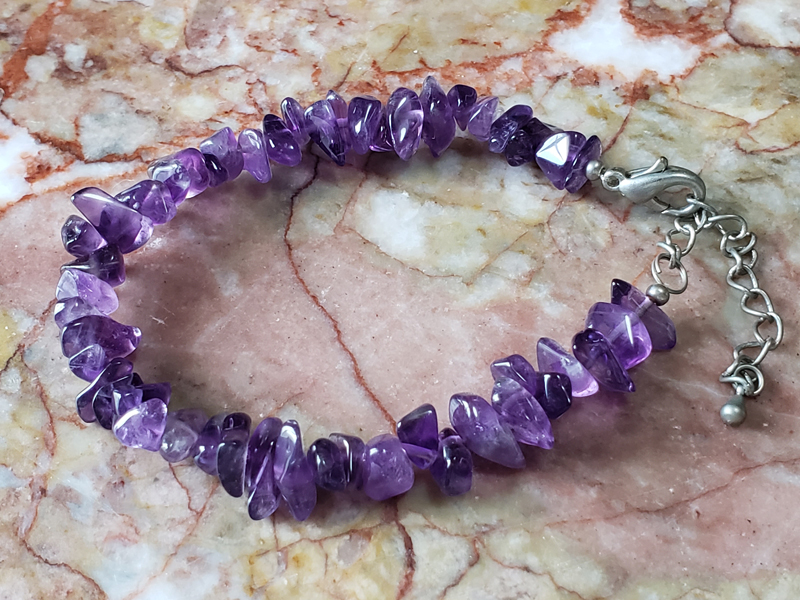
From my collection, the following is a gallery of amethyst domes.
It seems to have cut the amethyst dome which the original shape was spherical (maybe a rugby ball shape) in some equal part.
The sphere placed in the lower right corner of the amethyst dome is amethrine (a precious stone that is a combination of amethyst and citrine).
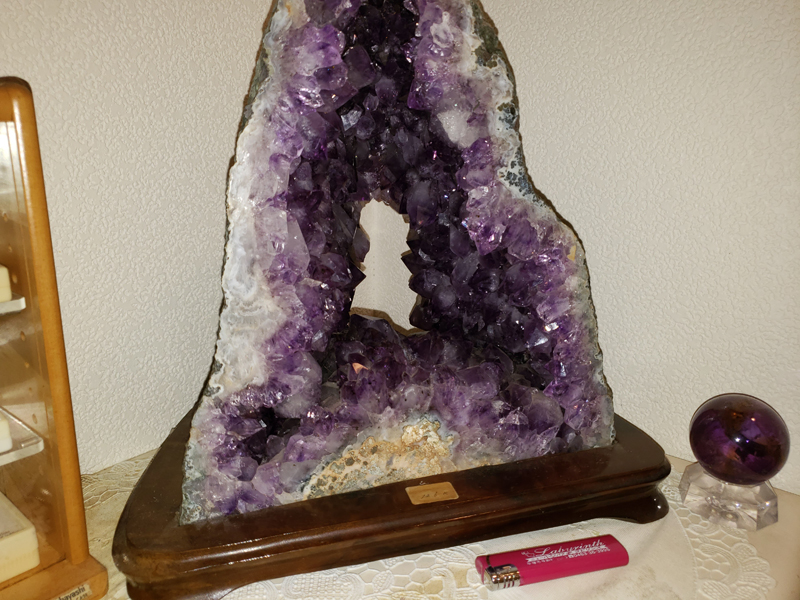
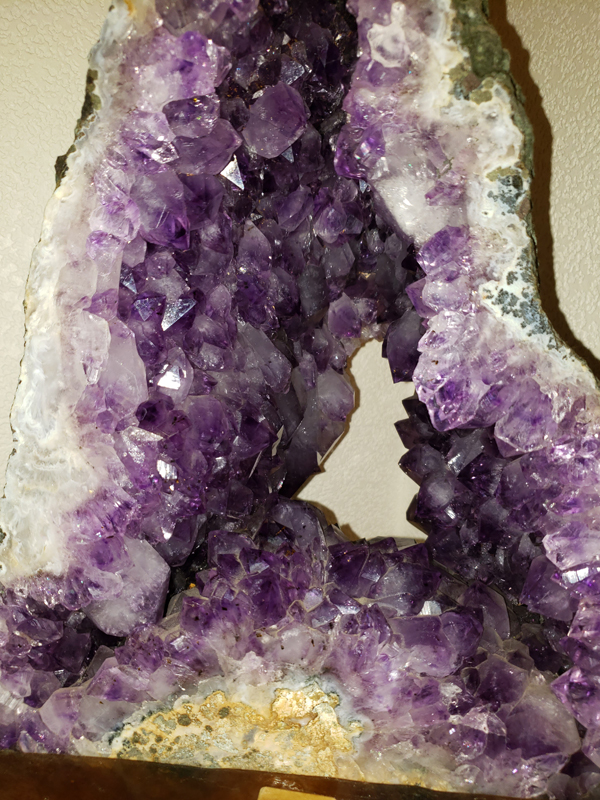
Other amethysts can also be posted on the following blog:
Natural Aquamarine Bracelet
Aquamarine is known as the birthstone of March and mineralically belongs to the same beryl (green pillar stone) as emeralds.
This bracelet was purchased from a Brazilian dealer at the Tokyo Mineral Show (Sunshine City, Ikebukuro), where jewelry and mineral dylers from all over the world gather.
I think that it is a rare gem that it is made in the bracelet as the crystal of aquamarine.
Aquamarine is mainly from Brazil, Madagascar and Siberia.
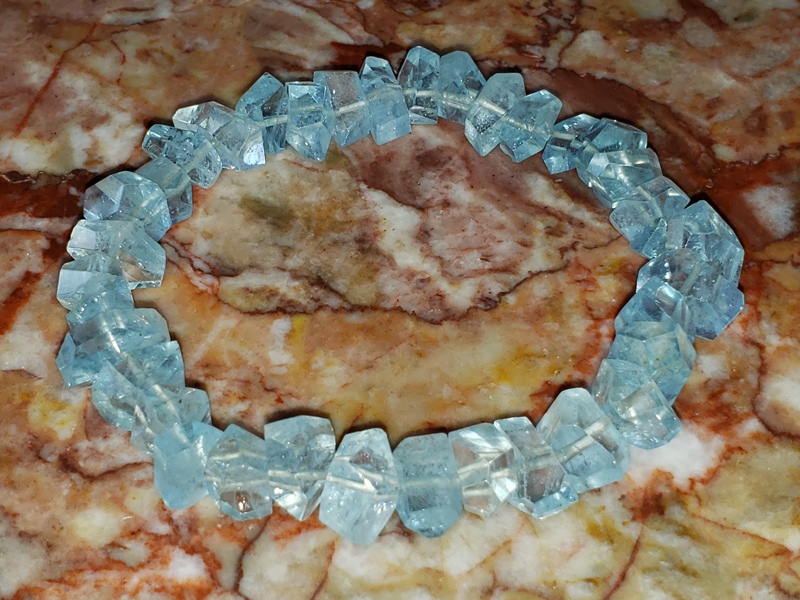
Other aquamarines are also posted on the following blog.
Natural Blue Moonstone Bracelet
The Japanese name of Moonstone is a length stone and a kind of positive long stone.
It is called Moonstone because the blue or white color effect (Syrah effect) looks like moonlight. The cause of the flash is that the inside of the stone is divided into two kinds of stone, and the turning and interfering effect of light occurs at the boundary.
Of the moonstones, the one that the Syrah phenomenon is beautiful in blue is called a blue moonstone in particular. In addition, the blue-glowing gemstone is also called the Royal Blue Moonstone.
Moonstone is also known as the birthstone of June.
Moonstone is mainly from India, Sri Lanka and Myanmar.
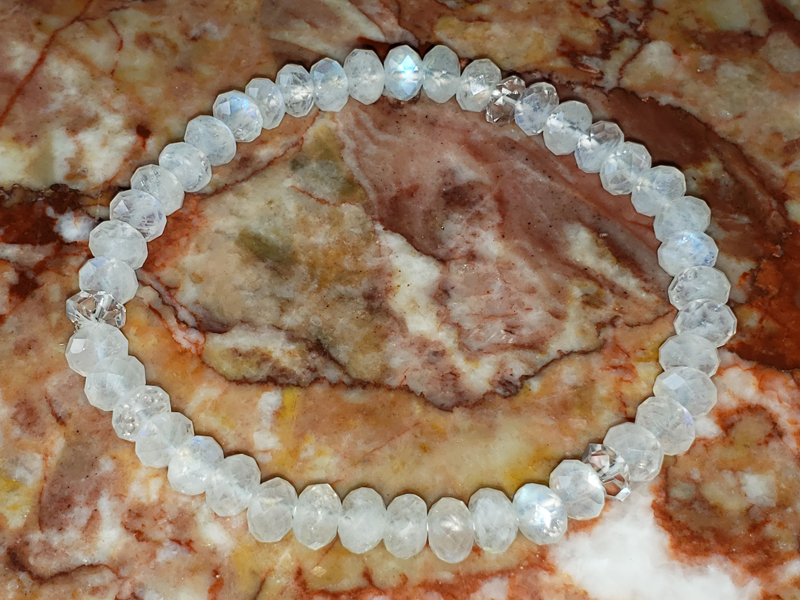
(Ball diameter 6.5mm / India / 55.45ct)
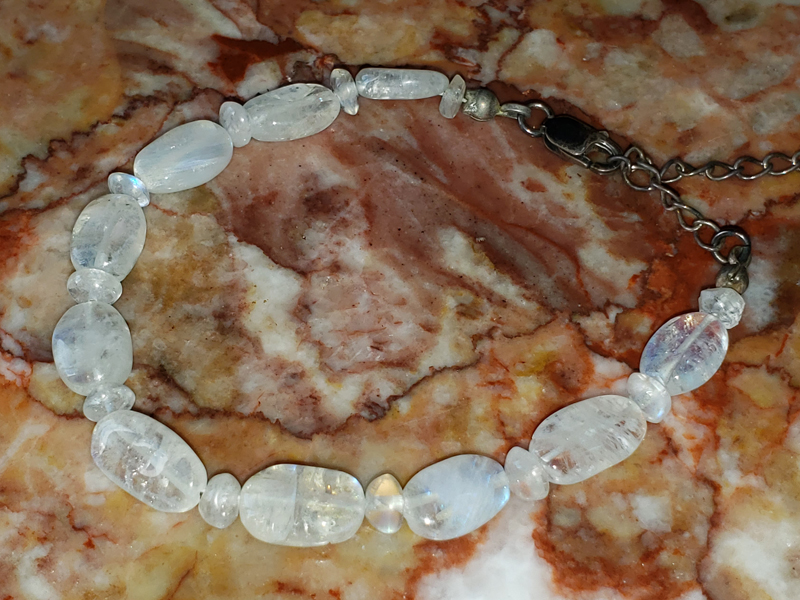
(Tumble/36.50ct)
Other Moonstones can also be posted on the following blog:
Natural Garnet Bracelet
This is a natural road night garnet bracelet. Garnett is known as the birthstone of January.
Various kinds of garnets are produced all over the world, but the main production areas are India, Sri Lanka, Russia, etc.
The Japanese name of the garnet is ash banzakuro stone. The English name Grossular is derived from the fact that when it was discovered by Siberian miners in the early 19th century, its pale green crystal shape looked like Grossularia, a type of Gooseberry. Pure crystals are standard for oblique 12-sided bodies. And, when iron increases, the crystal surface increases to 24 surfaces.
Garnets are multicolored stones and can be of various types, including Tsabolite (green), demantoid (green), specatite (orange), hesonite (orange), mariganette (yellow), umbalite (purple), and groschler (other colors).
This wine-coloured garnet is called a road night garnet.

Other garnets can also be posted on the following blog:
Natural Cayer Night Bracelet
The name Kaya Knight is derived from the Greek word "Kyanos" (blue). Its beautiful blue glow is a gem reminiscent of blue sapphires.
However, the amount of jewelry produced is very small, and the hardness along the direction of the crystal axis is "4 to 5/6 to 7. Because it has different features (2 hard stones) from 5", it is difficult to process, and the cut cayernite is positioned as a rare gem.
Cayer Night, like sapphires, is also the birthstone of September.
Caillanite is mainly from Brazil, the United States, Kenya, etc.
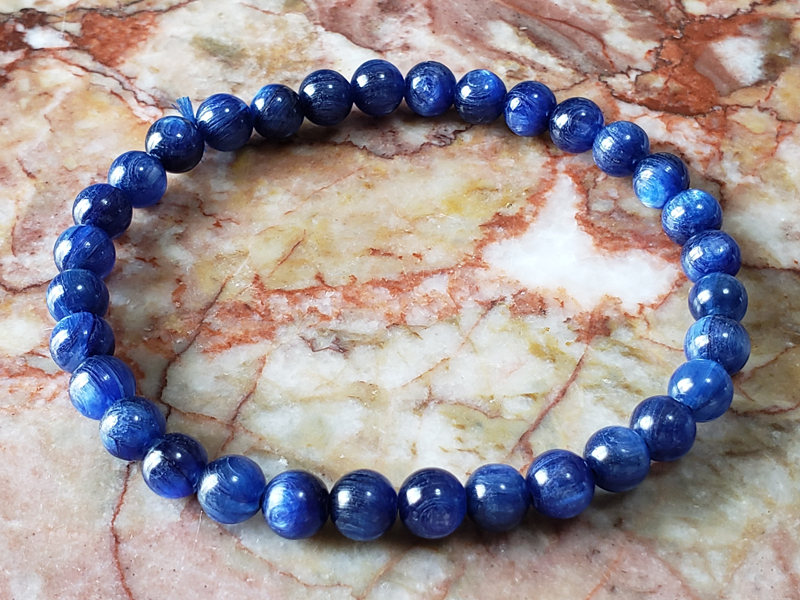
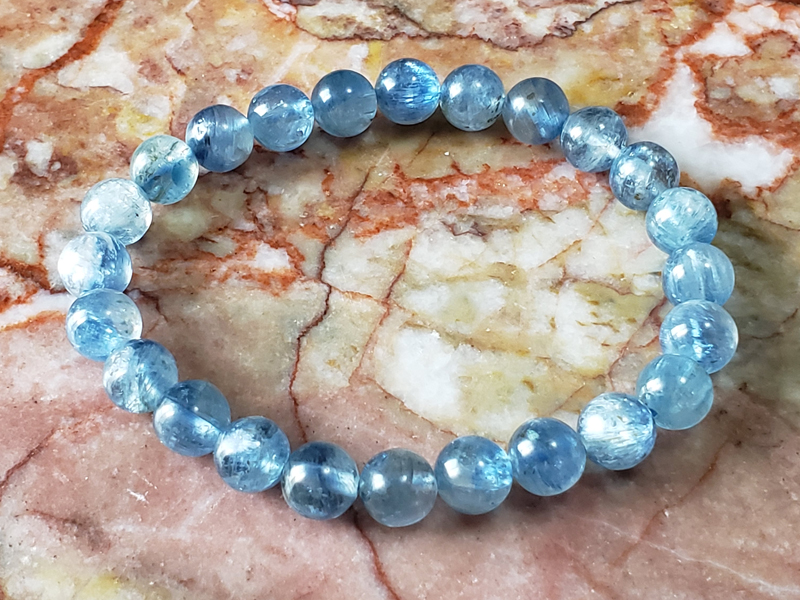
Natural Lapi Lazuli Bracelet
This is a natural lapi lazuli bracelet from Pakistan.
Lapi Lazuli is known as the birthstone of December and is called Raslite.
The color development of blue is due to the components of sulfur. When it is over-present, it combines with iron to form a lutein. The golden part of the following photograph contains yellow iron ore, and the white color is a partial stone.
Among them, those that contain only lute iron ore are especially useful. Lapi Lazuli is also a collection of other minerals, such as raslites, sodalites, awines, and noselites. Lapi Lazuli has been used as a material for orange paints for a long time.
Lapi Lazuli is mainly from Myanmar, Pakistan, Afghanistan and Chile.
In addition, although it is the following lapi lazuli bracelet, unfortunately it is likely to have been dyed on natural stone.
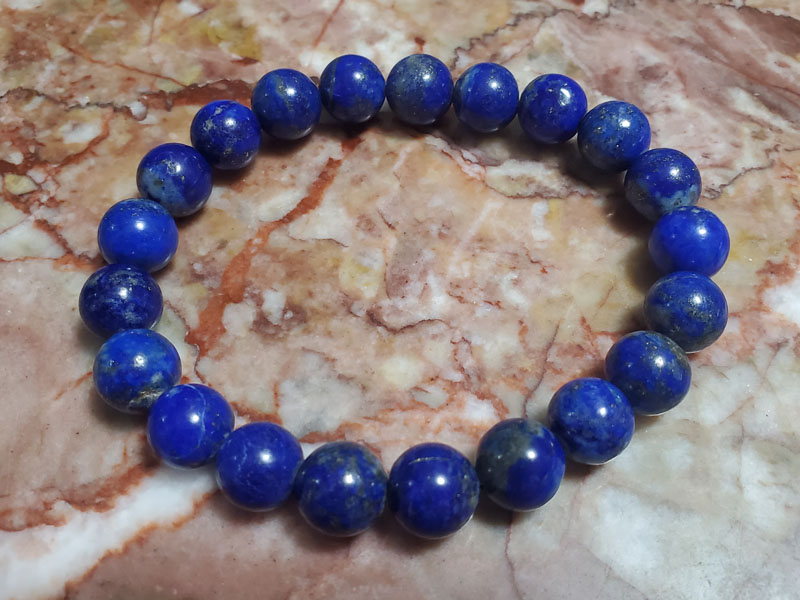
Other lapi lazuli are also available on the following blog:
Natural Peridot Bracelet
Peridot is known for its birthstones in August. And among the canlanites, 橄欖 are called peridots. It is also called olivine because of its beautiful olive color.
The composition of peridot is mainly magnesium and silicon, but it is said to have been called "Evening Emerald" by the Romans because it colors green by the action of iron containing it and shines bright green even under night lighting.
Peridot is produced mainly in Myanmar, the United States, and Brazil, but the quality of Myanmar and Mogok is said to be high among them.
The following bracelets are made by combining the parts of two types of natural stone bracelets. Each stone is connected through double silicone rubber.
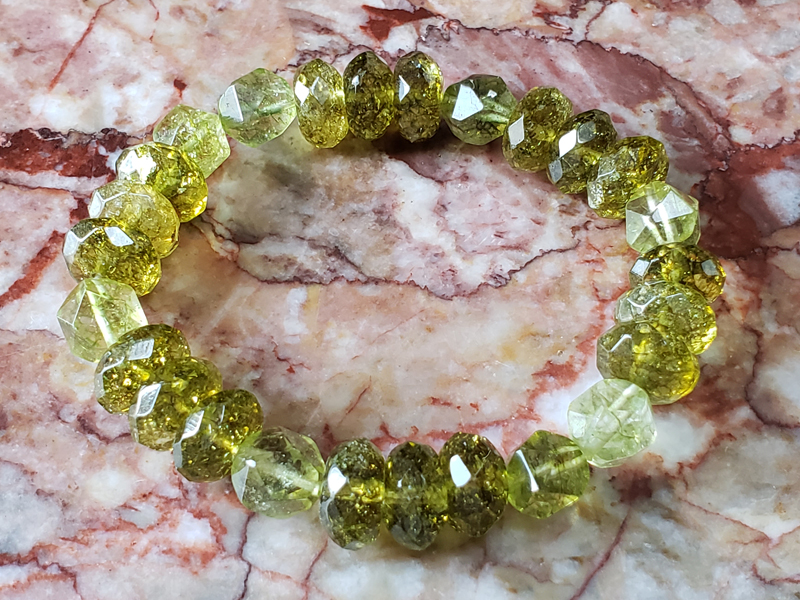
Other Peridots can also be posted on the following blog:
Rainbow Quartz Bracelet
Rainbow quartz is a crystal that shines in rainbow color by shining light on the internal crack. It is a crystal processed with special technology as well as aquaola.
Quartz is also known as the birthstone of April.
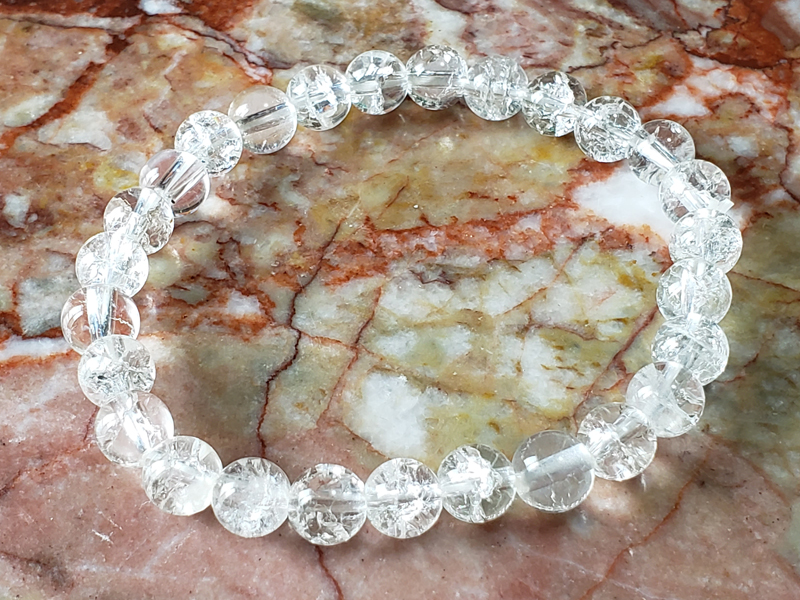
Natural Rose Quartz Bracelet
Rose quartz is a friend of quartz. There are various shades, from pink to light purple red. This is due to the very small amount of metal oxide (titanium oxide or iron oxide) contained in the crystal.
The main production areas of Rose Quartz are Madagascar, Brazil.
Rose quartz is also known as the birthstone of October.
If you choose the following 64-sided cut, it is recommended because it will color beautiful baby pink.
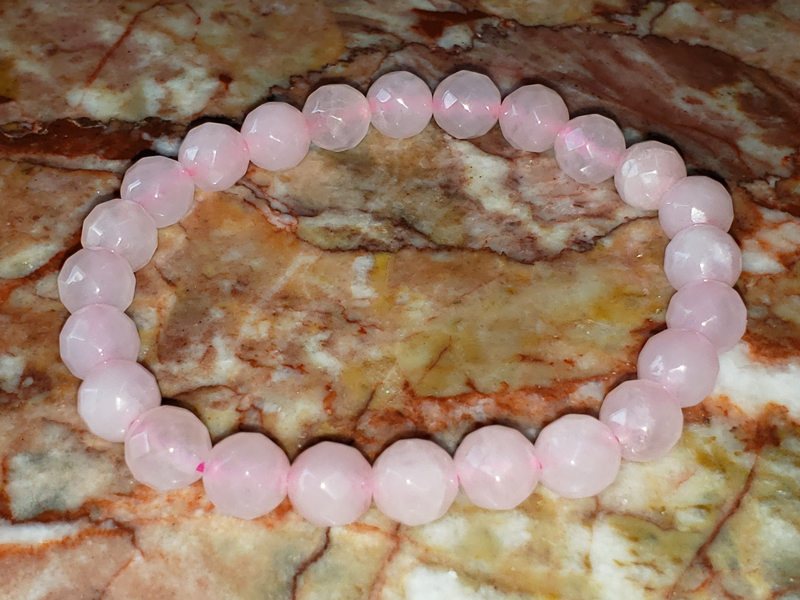
Natural Blue Sapphire Bracelet
This is a natural blue sapphire bracelet from Africa. The fastener is a rhodium-coated silver alloy.
Sapphire is known as the birthstone of September, and sapphires and rubies belong to the same mineral called cornum. All non-red tones of cornation are called sapphires.
The Mose hardness of corund random (steel balls) is "9", which is second only to diamond (hardness 10). Sapphire blue is due to trace amounts of iron and titanium.
Sapphires are mainly grown in Thailand, Myanmar, Sri Lanka and Madagascar.
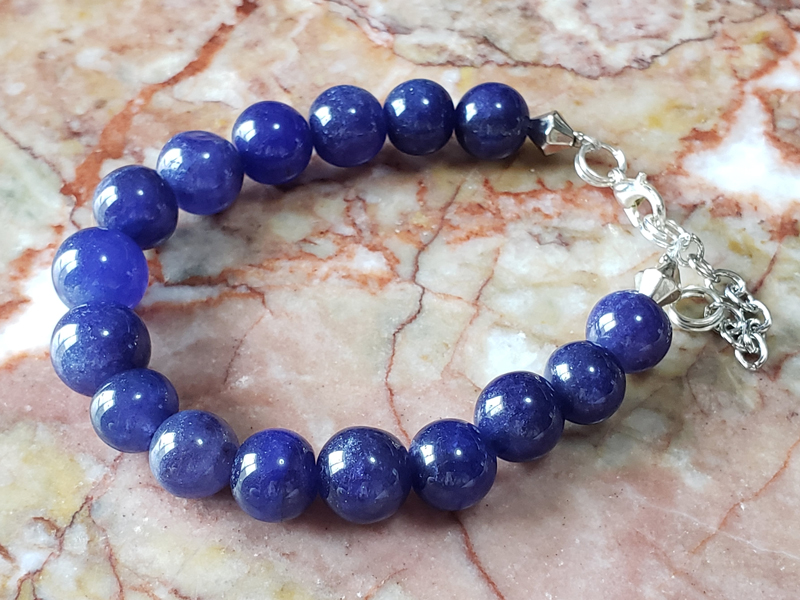
Other sapphires can also be posted on the following blog:
Natural Ruby Bracelet
Ruby, along with diamonds, emeralds, sapphires and alexandrite, are called the "Five Great Gemstones."
The rubies on the left are unheated rubies and are pure natural stones. It is usually superheated for the purpose of increasing transparency, and treated stone rubies are distributed on the market.
In the world of power stones, having a ruby is said to be blessed with passion and deep affection, and it is said that it has the power to regain the love of a partner.
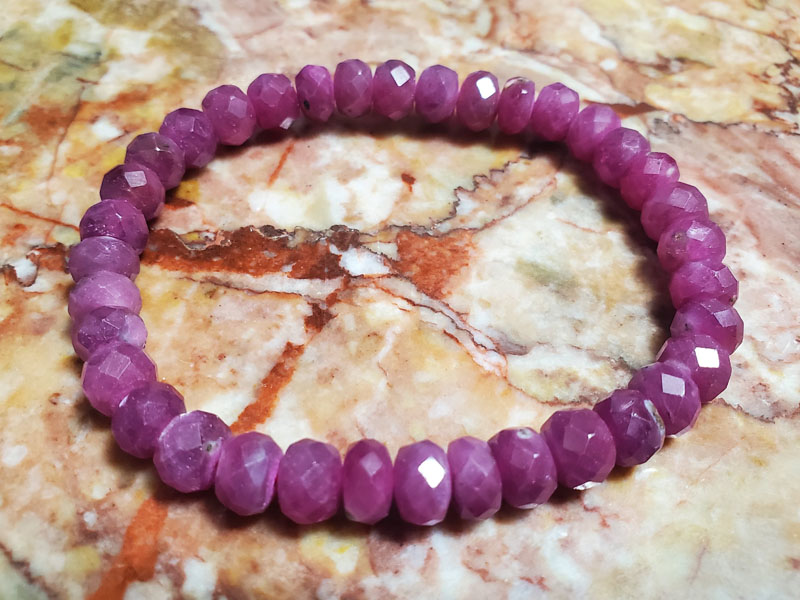
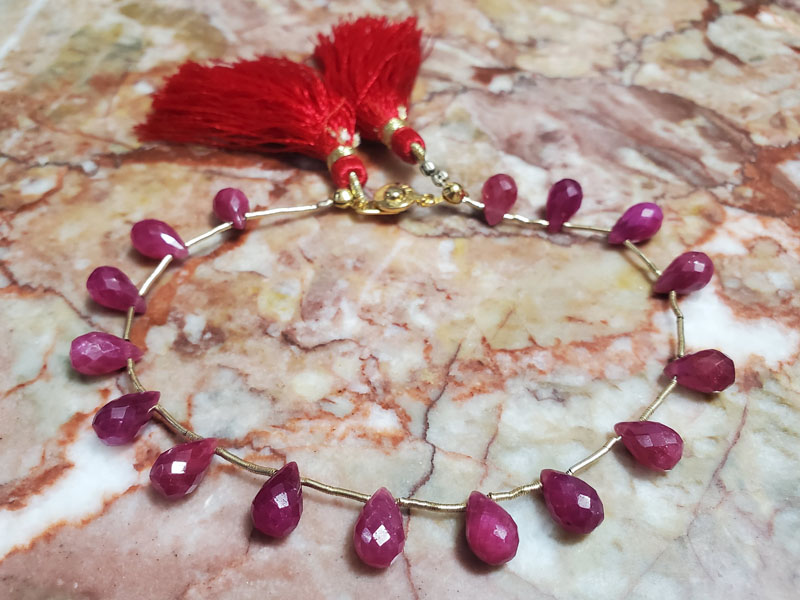
Apatite Bracelet
It is an apatite with a vivid blue color and a sense of luster. Apatite belongs to the phosphate mineral, and ordinary apatite is an un~translucent stone with many brown impurities and cracks, so there is a sense of transparency and high color development is extremely few.
In the world of power stones, apatite is a stone that is said to have energy such as "strengthening and connecting bonds".
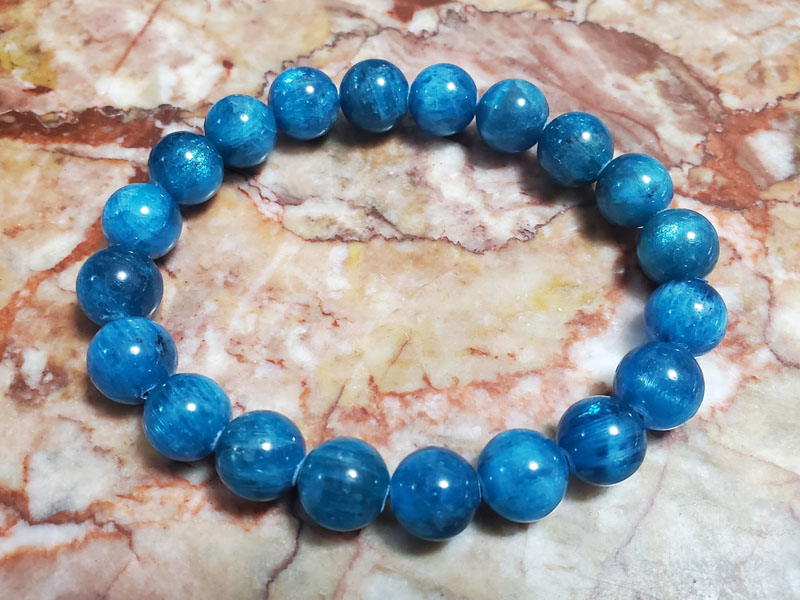
Natural Sunstone Bracelet
Sunstone (sun feldite) is a companion of the same feldspar as Moonstone, but it is a oblique feldspar with a composition close to ash feldspar mainly calcium.
Another name is Aventurine Feldspar.
The inside of the stone contains metal pieces of crystals such as red steel and copper, and depending on the angle at which the light shines, yellow and red rays shine from the bottom of the stone.
Sunstone is mainly from India, Canada, the United States (Oregon), Norway, and Japan (Miyakejima).
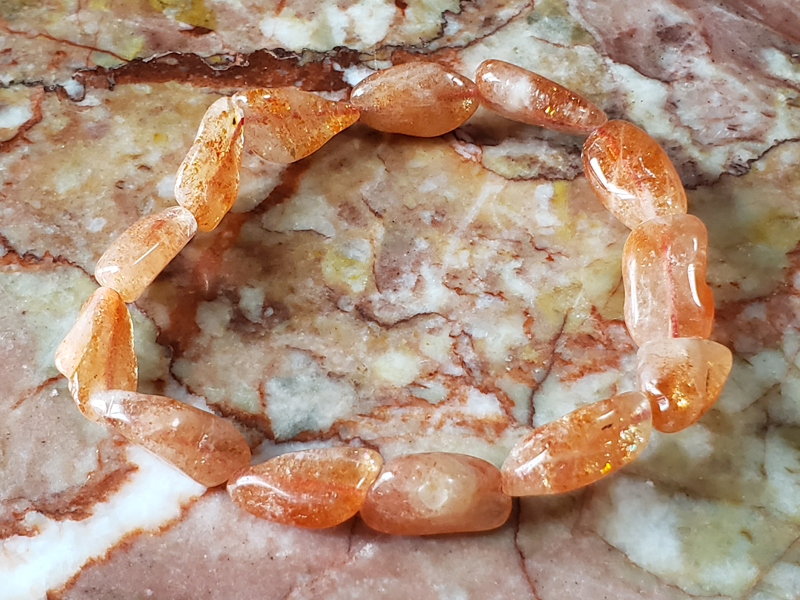
Artificial Emerald Tennis Bracelet
It is a tennis bracelet of synthetic emerald. Because the color is uniform and there is no inclusion, I understand that it is a synthetic stone (CZ emerald) immediately, but for the time being, it is good because it is beautiful.
The metal part of the bracelet (18cm) is K18 white gold plated.
Emerald is known as the birthstone of May.
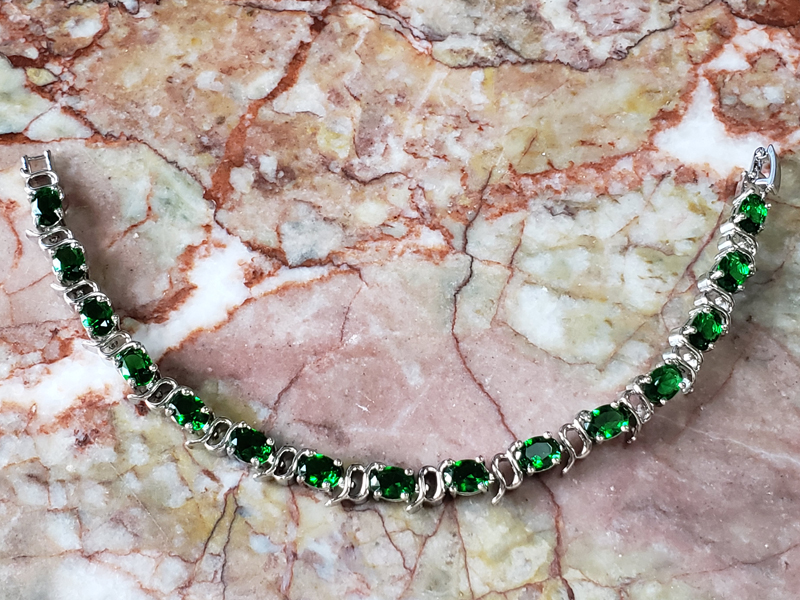
For real emeralds, please post them on the blog below.
🔗 Birthstone in May
Artificial Pink Tourmaline Bracelet
Synthetic pink tourmaline (CZ pink tourmaline) and crystal bracelet.
Like emeralds, jewely pink tourmaline is expensive, so it's hard to get this many balls of pink tourmaline in real life.
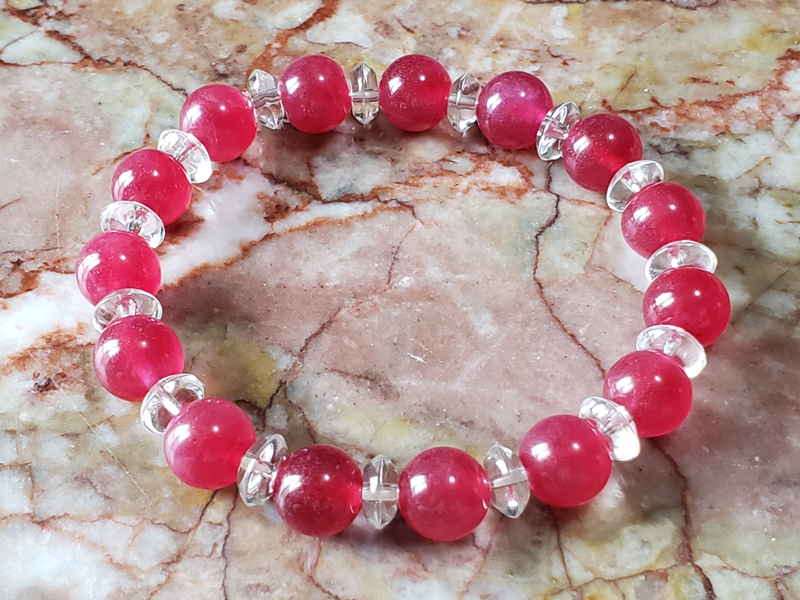
For real tourmaline, please post it on the following blog.
🔗 October Birthstone and Halloween
Artificial Tanzanite Bracelet
It is a bracelet of synthetic tanzanite. Tanzanite is a rare gem and expensive, so for the time being, I made it with synthetic stone (CZ Tanzanite).
Tanzanite (Blue Zoysite) was discovered by local tailor Manuel de Sousa in Tanzania, Tanganyika in 1967. After that, through a number of people, Tiffany named it "Tanzanite" in the name of the place of discovery.
Tanzanite is also known as the birthstone of September and December.
As the name suggests, Tanzanite is a gem produced only in Tanzania. The bluezoisite produced at the Melerani mine in Tanzania is the only recognized tanzanite. Therefore, the production volume of tanzanite seems to be decreasing year by year.
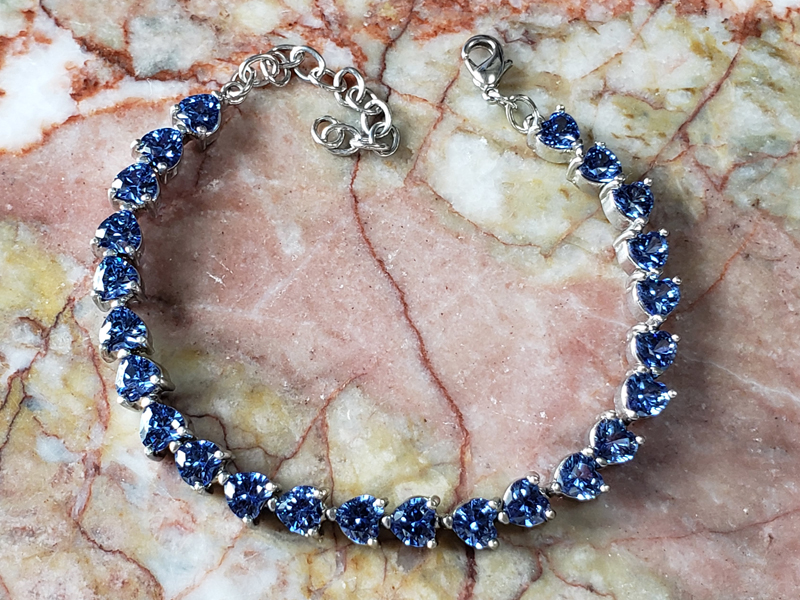
I'm sorry if it's just a fake Tanzanite introduction, so I'll upload the real Tanzanite I own in the gallery below.
The photo shows Tanzanite's original stone and Ruth from the left.
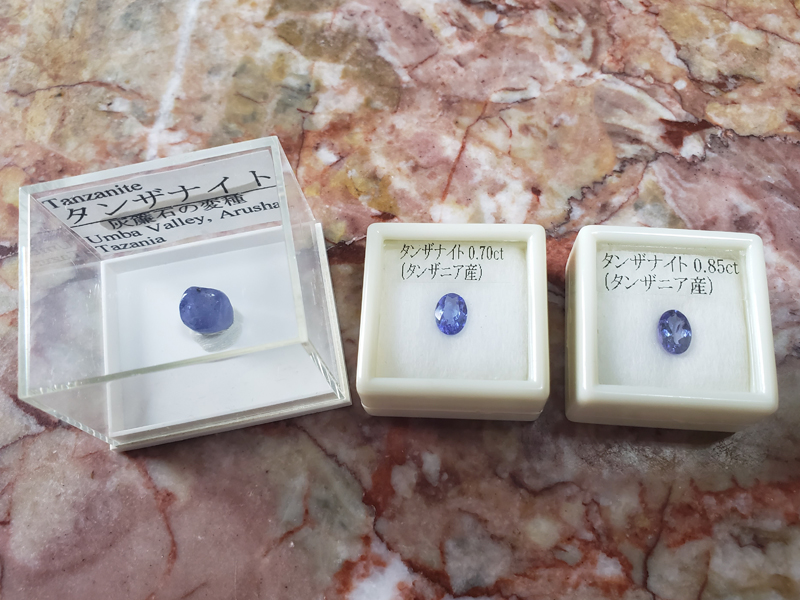
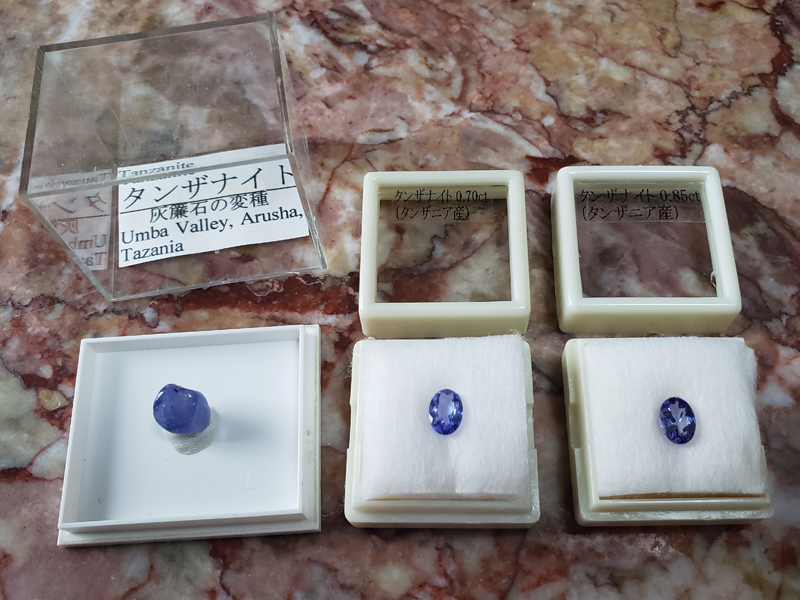
Natural Tourmaline Bracelet
This is a multi-coloured natural tourmaline bracelet.
Tourmaline, also known as the birthstone of October, belongs to silicate minerals.
It is also called an electric stone because it is electrically charged when the crystal is heated.
Tourmaline is mainly from Brazil, Africa and Sri Lanka.
Although it is a world-class mineral, copper-containing lysia electric stone, rarely found in the Brazilian state of Palaiva, is a rare gem and is prized as a paraiba tourmaline.
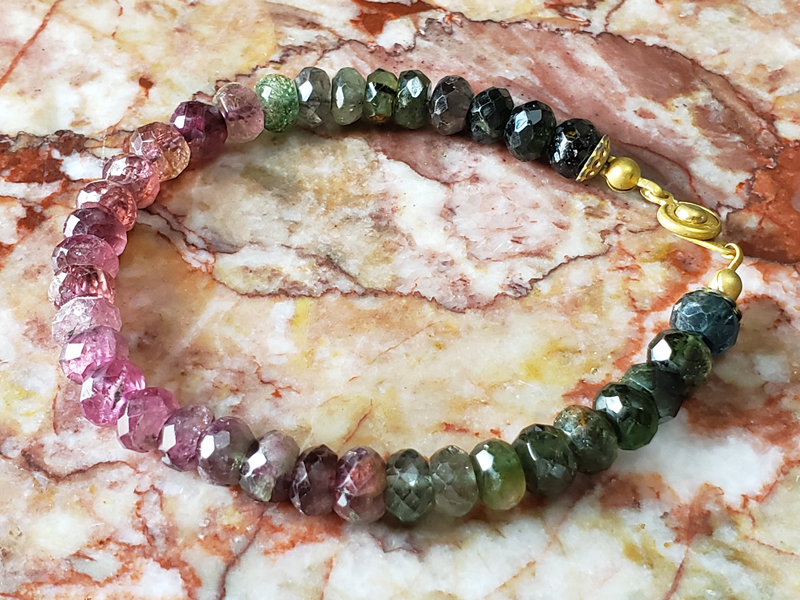
Pendant
We mainly collected pendant tops made of natural stone, but we couldn't buy expensive jewelry such as emeralds, rubies and sapphires, so we substituted some of our products with synthetic stones.
Natural Blue Moonstone Pendant Top
This is a pendant top of natural blue moonstone purchased at Tokyo Mineral Show (Ikebukuro, Sunshine City). The weight also contains the weight of the frame (silver).
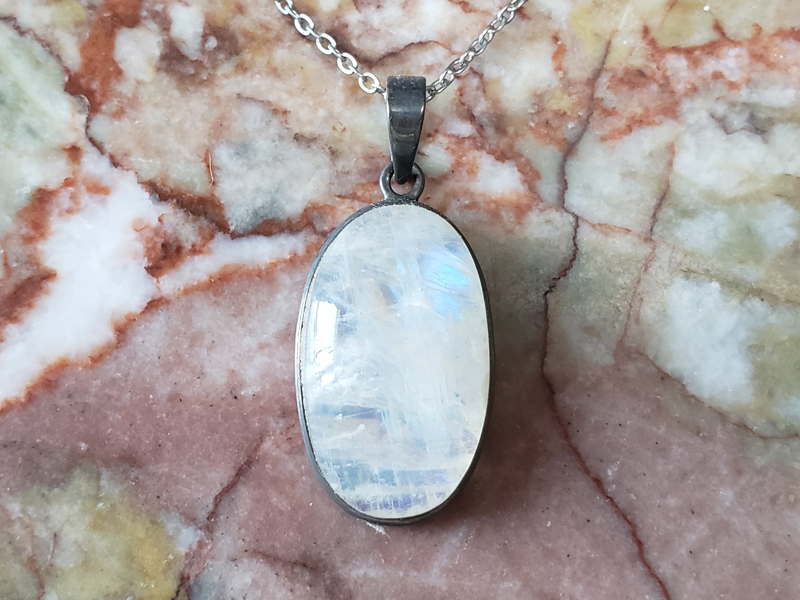
Blue Topaz Pendant Top
Topaz is known as the birthstone of November.
This pendant top was bought on the net a long time ago. There is no frame and it is only a stone (loose), but there is a presence very much because the grain is large and blue is beautiful.
Common blue topaz are processed in blue by irradiating natural white topaz (gamma rays, etc.).
Topaz is mainly from Brazil, Russia, Thailand, Cambodia, Vietnam and Africa.
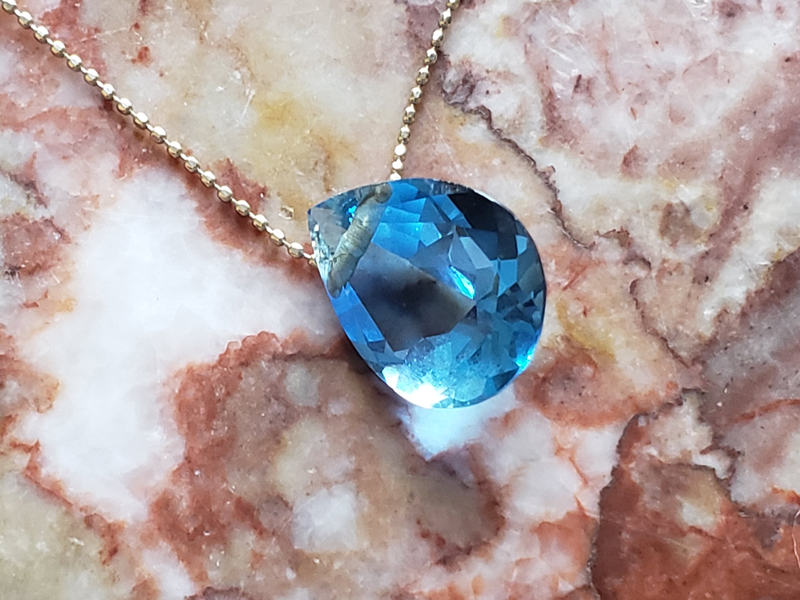
Other Topaz are also available on the following blog:
Natural Incarose Pendant Top
The mineral name of The Inca Rose is The Road Crosite (Hishi Manganese Mine), which is called Incarose because it is produced mainly in South America.
The shape of the mineral may form a diamond-shaped hephedron crystal, but it is often produced in the form of beans or stalactites.
The main production areas of Inca Rose are Argentina and Peru.
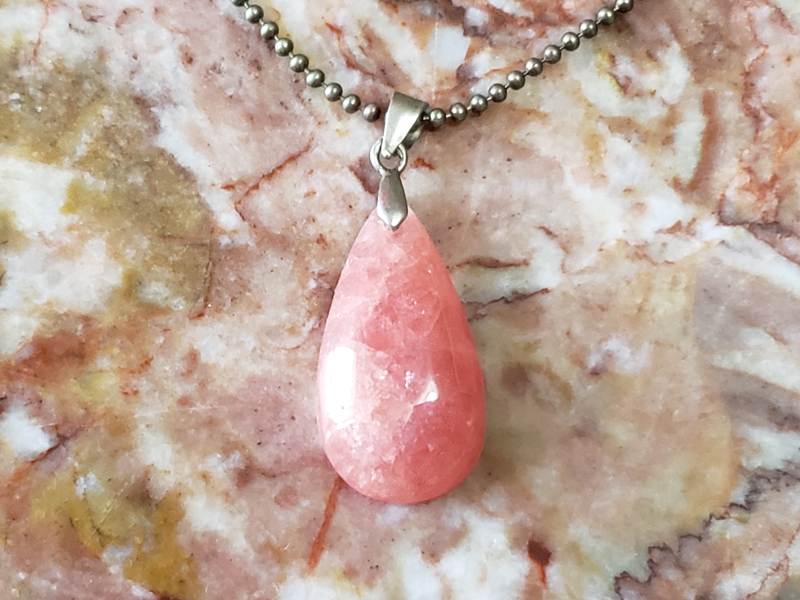
Aoi Pendant Tops
It is a pendant top of the rose. The frame and chain have been peeled off a lot, but it is K18GP processing.
The rose, also known as the jade, is known as the birthstone of May, as well as emeralds.
There is a mineral called soft ball (Neflight: permeable stone - greenstone-based angular stone) in the same stone as jade shine stone, but this is about 6.5 which is slightly lower than the hard ball lined with quartz, and because it is produced in China, it is not treated as a gem, and it is a stone of lower value than jade shine stone.
The main production areas of Jadeite are Myanmar (Kachin), Guatemala (Motagua Valley), the United States (New Idria District, California), Russia (West Sayan Mountains), Kazakhstan, and the near-transparent green JadeIte is very expensive.
By the way, the kite is also mined in Itogawa City, Niigata Prefecture in Japan.
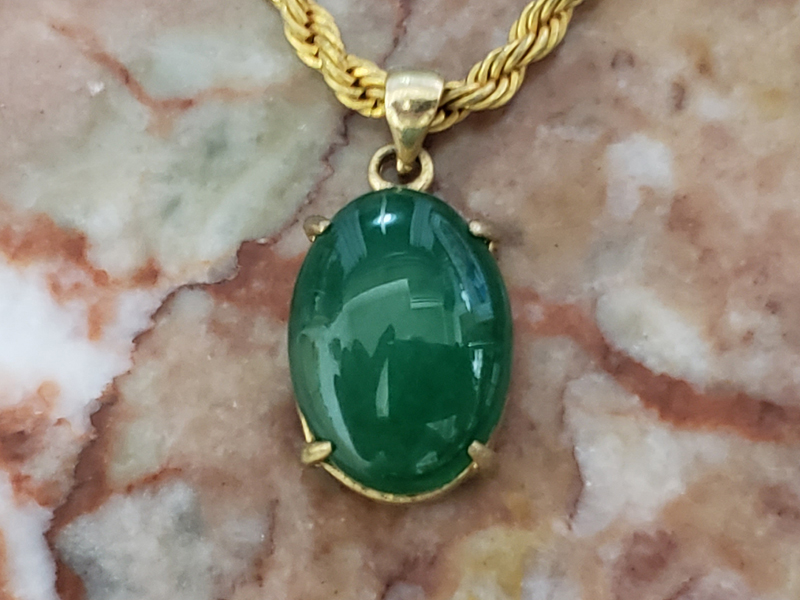
Natural Kunzite Pendant Top
The mineral name of Kunzite is Richia Teruishi.
The main components of Lithiaite are lithium and aluminum silicate, which are mainly raw materials for lithium and are used for oxygen sericulation agents and batteries. Transparent and good quality things are processed into jewels.
Richia bright stone also has the property of shining brightly when brought into a dark room after shining the sun.
However, if you leave it exposed to sunlight, it will decolor as well as amethyst, so be careful when handling it.
Richia brilliant stones are available in different colors, such as green, purple, gray, and white, and green ones are called hidenite and lilac pink (pink or purple) are called kunzite.
Kunzuit was discovered in 1902 by mineralogist G. F. Kunz.
Kunzite is mainly from Mexico, Russia and Pakistan, including the United States (South Dakota, North Carolina, California), Canada (Quebec), Brazil, Madagascar, and Afghanistan.
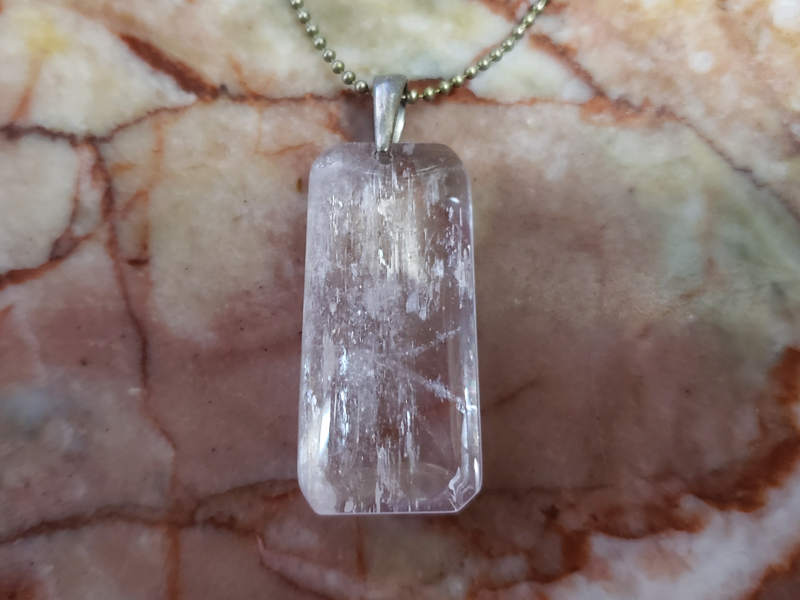
Artificial Emerald Pendant Tops
Synthetic emerald pendant top (Mele diamond is CZ) The frame is silver.
This product seems to be from Cambodia, but whether this emerald is synthetic emerald or CZ is unknown because there is no inspection equipment, synthetic emeralds are still expensive, so I think that it is probably zirconia.

Synthetic Ruby Pendant Tops
Synthetic ruby pendant top. Ruby is the birthstone of July.
Ruby belongs to the same mineral as sapphire.
The composition of cornations is based on aluminum oxide (Al2O3In recent years, synthetic rubies and sapphires have become relatively inexpensive because they can be artificially synthesized by the flame melting method.
In addition, only the chain of the photograph is real 18 gold, and the pendant frame is K18 processed.
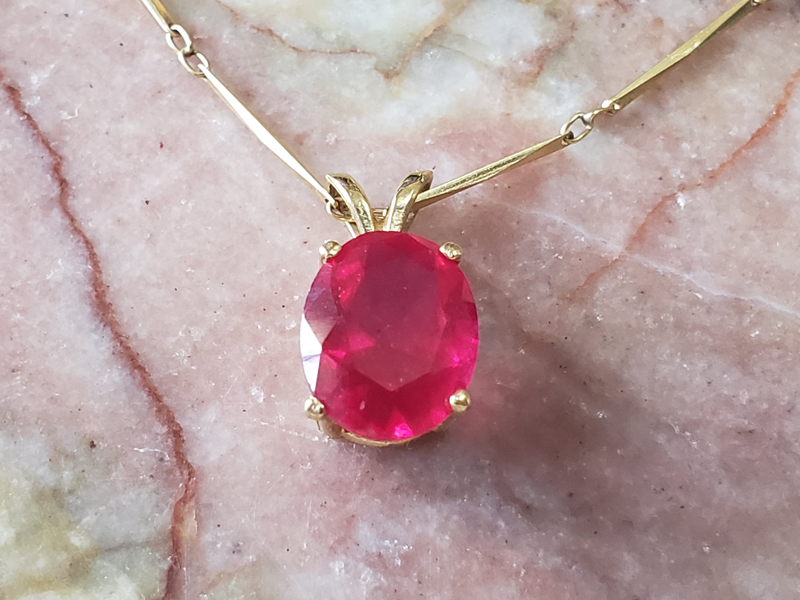
Other rubies can also be posted on the following blog:
Synthetic Sapphire Pendant Tops
It is a pendant top of synthetic sapphire.
Like rubies, this synthetic sapphire can now be artificially synthesized, making it relatively inexpensive to obtain.
In addition, the chain and pendant frame of the photograph are silver.
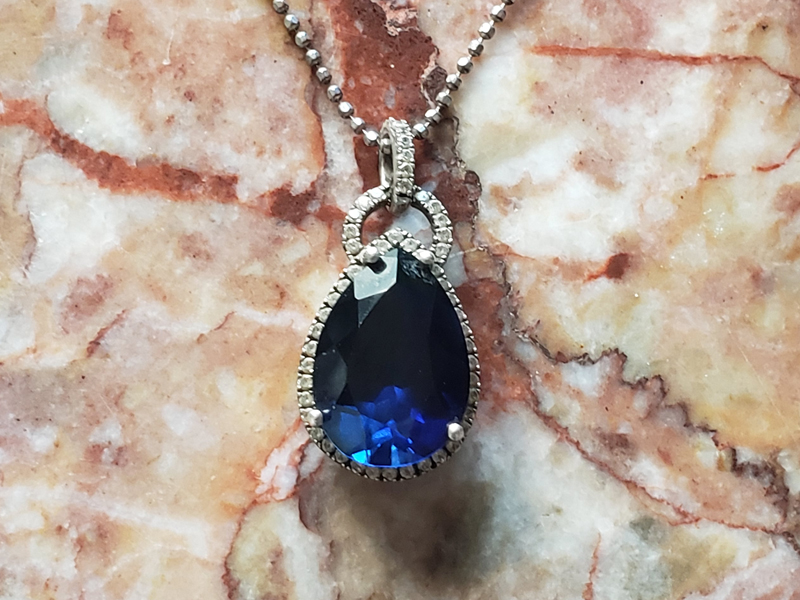
White Opal Necklaces
Opal is the birthstone of October. The weight of the following photos also includes the framework. The gold is silver and the diamond is CZ.
Opals have a color-playing effect by containing trace amounts of moisture in silicon dioxide.
The main production areas are Australia (Lightning Ridge, Queensland, Coober Pedy, etc.), Mexico, etc.
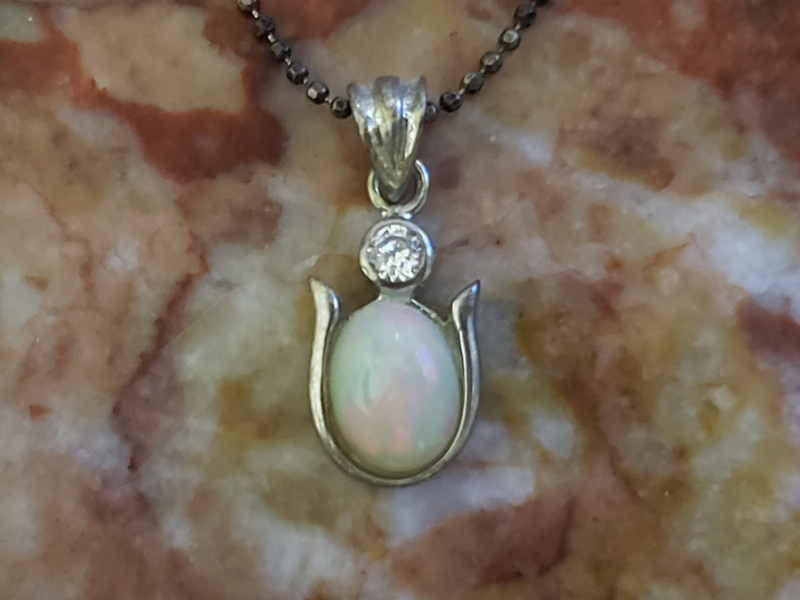
Ring
Regarding the ring, I will introduce the ring of ruby and diamond.
Natural Ruby Rings
This is a natural ruby ring purchased from an Indian at the Tokyo Mineral Show (Sunshine City, Ikebukuro). As a result of cutting the price on the last day, I was able to purchase it for 5,000 yen.
The bullion is rhodium treated with silver 925. Ruby is considered natural (heat treatment is possible) and is about 2 ct. It is definitely a real ruby, but unfortunately I inadvertently hit the fence and the upper left edge was missing. 😭
Natural rubies are one of the colonums in mineralogy and are colored red by containing 1 to 2% chromium oxide in aluminum oxide.
Ruby is mainly from Sri Lanka, Thailand, Vietnam, Cambodia, Tanzania, Madagascar and Mozambique.
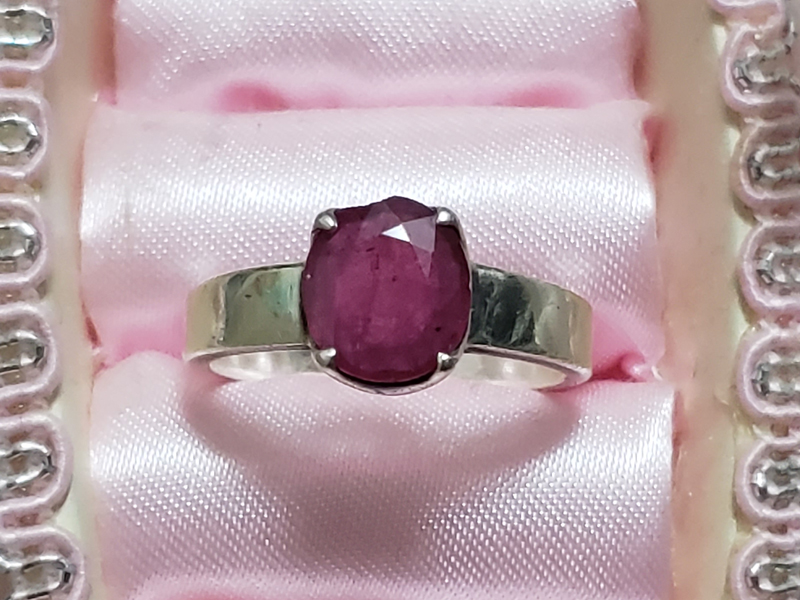
Natural Diamond Rings
This will be 😅 a gift from our customers
The gold is K18 white gold, the size of the diamond has confirmed the stamp of 0.3 ct. The total number of carats in mele dia is unknown.
Diamonds are mainly from Russia, Botswana, Congo, South Africa and Australia.
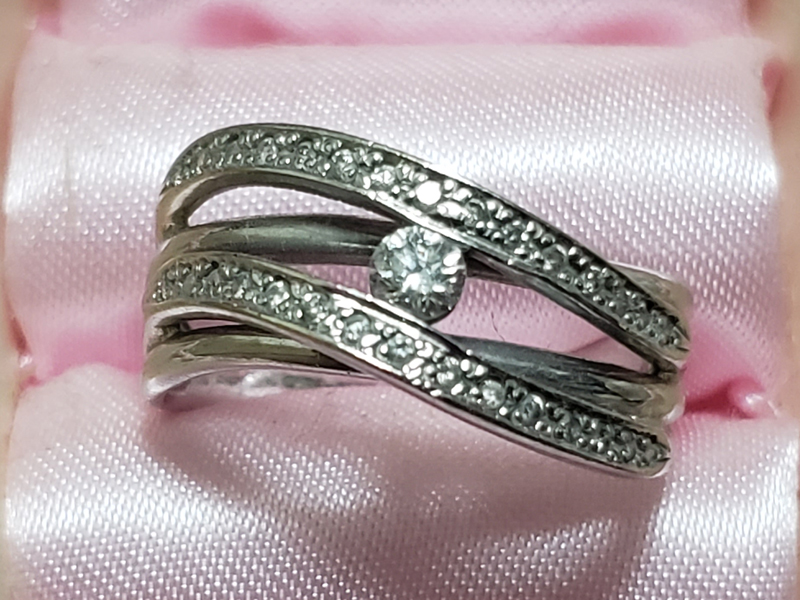
Other diamonds are also posted on the following blog.
Necklace
Regarding necklaces, I would like to introduce you to a necklace of natural emeralds and natural rubies.
Natural Emerald Necklaces
It is a necklace of natural emeralds of multi-color.
Emeralds are colored in a beautiful green color by containing chromium components in beryl. Emerald's hardness is 7.5, which is about the same hardness as Topaz, but it is also fragile and fragile.
Emeralds are mainly grown in Colombia, Zambia and Brazil.
It should be noted that the jewels of the same Beryl system as emeralds, golden-colored jewels are called golden beryl, baby pink is morphanite, red beryl (produced only in The United States: Utah, New Mexico), and colorless transparent ones are called goshernite.
Therefore, the following necklace is exactly emerald and goshernite necklace.
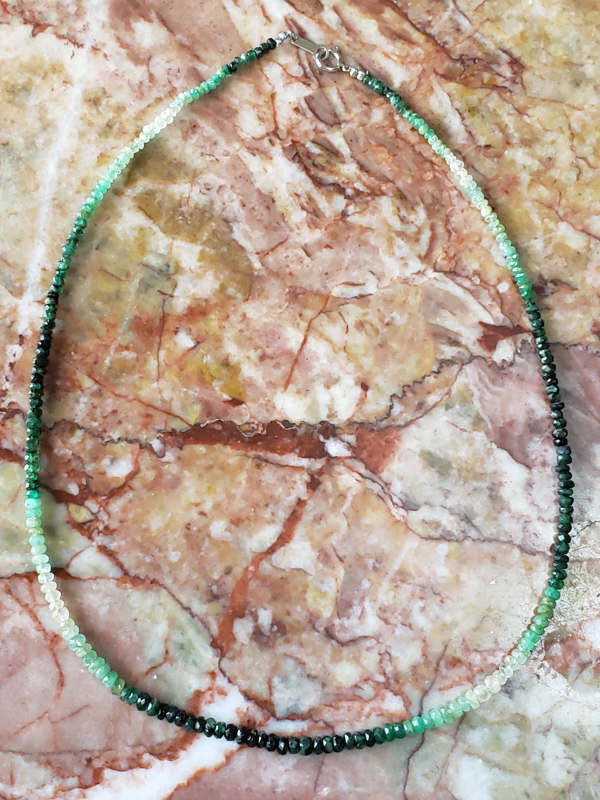
Natural Ruby Necklaces
This is a multi-coloured natural ruby necklace. Ruby belongs to the same mineral as sapphire, but cornum, which is colored red, is called ruby.
Therefore, all cornondes other than red are in the sapphire category.
Therefore, the following necklaces are exactly ruby, pink sapphire and white sapphire necklaces.
